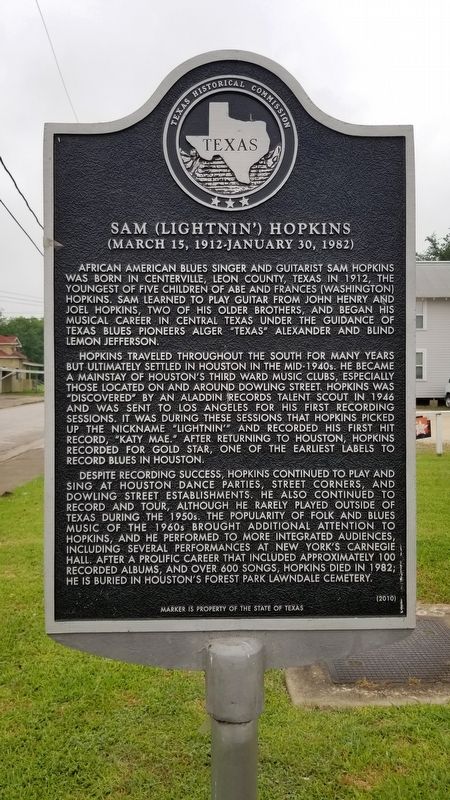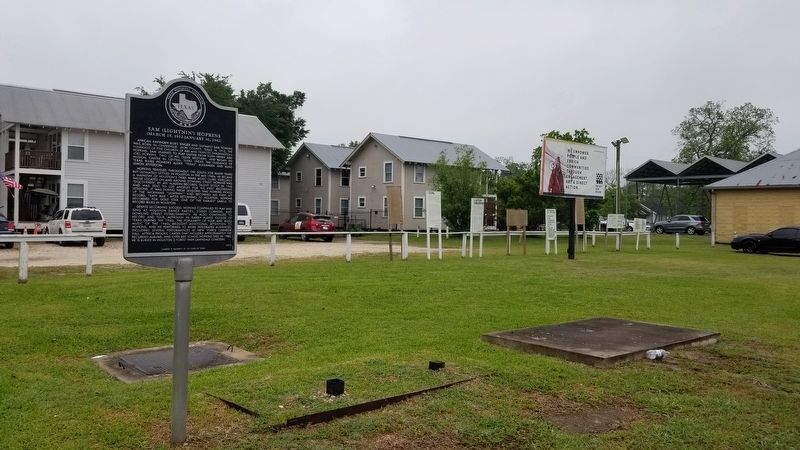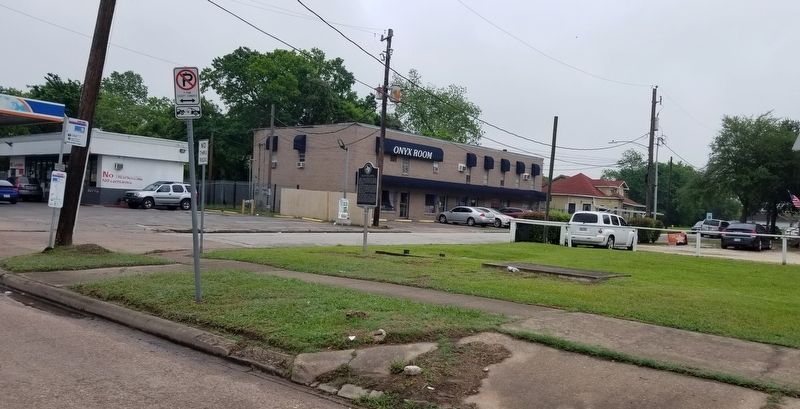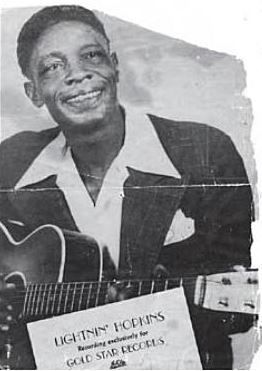South Side in Houston in Harris County, Texas — The American South (West South Central)
Sam (Lightnin’) Hopkins
(March 15, 1912 - January 30, 1982)
African American Blues singer and guitarist Sam Hopkins was born in Centerville, Leon County, Texas in 1912, the youngest of five children of Abe and Frances (Washington) Hopkins. Sam learned to play guitar from John Henry and Joel Hopkins, two of his older brothers, and began his musical career in Central Texas under the guidance of Texas Blues pioneers Alger “Texas” Alexander and Blind Lemon Jefferson.
Hopkins traveled throughout the south for many years but ultimately settled in Houston in the mid-1940s. He became a mainstay of Houston’s Third Ward music clubs, especially those located on and around Dowling Street. Hopkins was “discovered” by an Aladdin Records talent scout in 1946 and was sent to Los Angeles for his first recording sessions. It was during these sessions that Hopkins picked up the nickname “Lightnin’” and recorded his first hit record, “Katy Mae.” After returning to Houston, Hopkins recorded for Gold Star, one of the earliest labels to record Blues in Houston.
Despite recording success, Hopkins continued to play and sing at Houston dance parties, street corners, and Dowling Street establishments. He also continued to record and tour, although he rarely played outside of Texas during the 1950s. The popularity of Folk and Blues music of the 1960s brought additional attention to Hopkins, and he performed to more integrated audiences, including several performances at New York’s Carnegie Hall. After a prolific career that included approximately 100 recorded albums, and over 600 songs, Hopkins died in 1982; he is buried in Houston’s Forest Park Lawndale Cemetery.
Erected 2010 by Texas Historical Commission. (Marker Number 16469.)
Topics. This historical marker is listed in these topic lists: African Americans • Arts, Letters, Music. A significant historical year for this entry is 1912.
Location. 29° 43.994′ N, 95° 21.951′ W. Marker is in Houston, Texas, in Harris County. It is in the South Side. Marker is at the intersection of Emancipation Avenue and Francis Street on Emancipation Avenue. Touch for map. Marker is at or near this postal address: 3405 Emancipation Avenue, Houston TX 77004, United States of America. Touch for directions.
Other nearby markers. At least 8 other markers are within walking distance of this marker. Reverend John Henry "Jack" Yates (about 600 feet away, measured in a direct line); Trinity United Methodist Church (about 800 feet away); Sixth Church of Christ, Scientist (approx. 0.2 miles away); Richard Brock (approx. 0.2 miles away); The Legacy of Emancipation Park (approx. 0.2 miles away); Reverend David Elias Dibble (approx. ¼ mile away); Jordan Grove Missionary Baptist Church (approx. ¼ mile away); Richard Allen (approx. ¼ mile away). Touch for a list and map of all markers in Houston.
Also see . . . Hopkins, Sam [Lightnin'] (1911–1982).
Over his career Hopkins recorded for nearly twenty different labels, including Gold Star Records in Houston. On occasion he would record for one label while under contract to another. In 1950 he settled in Houston, but he continued to tour the country periodically. Though he recorded prolifically between 1946 and 1954, his records for the most part were not big outside the Black community. It was not until 1959, when Hopkins began working with legendary producer Sam Charters, that his music began to reach a mainstream White audience. Hopkins switched to an acoustic guitar and became a hit in the folk-blues revival of the 1960s. Source: The Handbook of Texas(Submitted on April 21, 2021, by James Hulse of Medina, Texas.)
Credits. This page was last revised on February 1, 2023. It was originally submitted on April 16, 2021, by James Hulse of Medina, Texas. This page has been viewed 459 times since then and 55 times this year. Photos: 1, 2, 3. submitted on April 16, 2021, by James Hulse of Medina, Texas. 4. submitted on April 21, 2021, by James Hulse of Medina, Texas.



